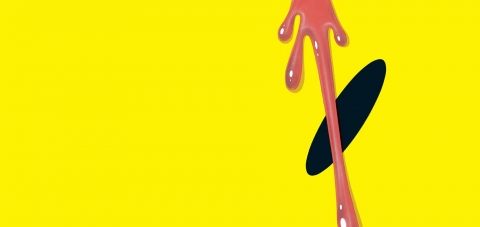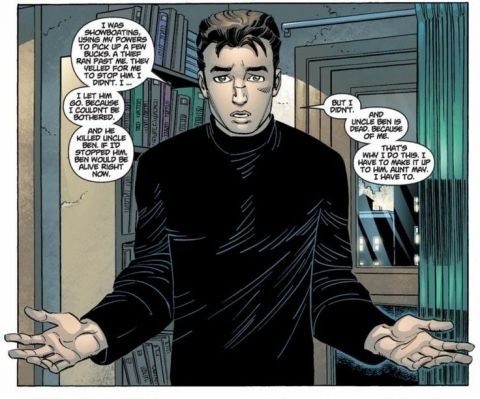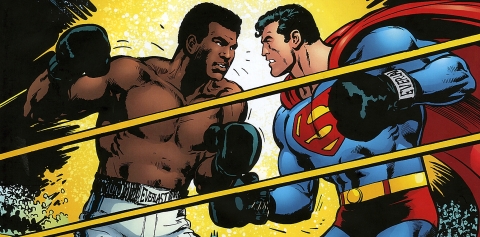52 weeks. 52 different writers. 2 trade paperbacks or hardcovers a week. Each week I’ll take a look at a different writer and read two different collected editions from within that person’s repertoire to help in the examination of their work.
Kyle Higgins has had a rather brief career when it comes to comics. He came onto the scene back in 2009 doing some work for Marvel Comics but his career really took off when he started doing Batman related work for DC Comics in 2010. Working with current Batman scribe, Scott Snyder, the two men co-write the popular “Gates Of Gotham” series, detailing the history of Gotham City. Most recently, Higgins work has been on display in the weekly Batman series “Batman Eternal”. Kyle Higgins is easily most well known for his New 52 work involving Nightwing, launching the series back in 2011 when the company wide relaunch took place, writing every single issue except for the final one.
Nightwing Volume 1: Traps and Trapezes
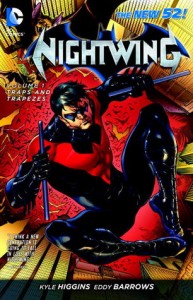 Life’s been a little weird for Dick Grayson. After filling in as Batman for a year for an absent Bruce Wayne, Dick Grayson is enjoying the shift back into his own superhero persona, Nightwing. The high-flying, acrobatic hero finds no greater joy than sailing off of roof tops and fighting crime all throughout Gotham City. There is something in Gotham City though that Dick is struggling to come to terms with as it involves his past. Haley’s Circus, the Circus he performed in as a child with his parents before they were killed during a trapeze accident, is back in town and he tries to fight back the urge to visit the place that was his home before being taken in by Bruce Wayne in Gotham. Returning to the Circus puts Dick in the cross hairs of the deadly assassin, Saiko, who wants to kill him because he’s the “fiercest killer in all of Gotham City”, which is certainly news to him.
Life’s been a little weird for Dick Grayson. After filling in as Batman for a year for an absent Bruce Wayne, Dick Grayson is enjoying the shift back into his own superhero persona, Nightwing. The high-flying, acrobatic hero finds no greater joy than sailing off of roof tops and fighting crime all throughout Gotham City. There is something in Gotham City though that Dick is struggling to come to terms with as it involves his past. Haley’s Circus, the Circus he performed in as a child with his parents before they were killed during a trapeze accident, is back in town and he tries to fight back the urge to visit the place that was his home before being taken in by Bruce Wayne in Gotham. Returning to the Circus puts Dick in the cross hairs of the deadly assassin, Saiko, who wants to kill him because he’s the “fiercest killer in all of Gotham City”, which is certainly news to him.
Kyle Higgins’ time with Dick Grayson reads like a love letter to the character. You can tell, unequivocally, that Kyle Higgins is a huge Nightwing fan. There’s a certain level of care and effort that just shines through in this first volume detailing the exploits of everyone’s favourite sidekick turned superhero. Higgins takes his time with Dick Grayson and Nightwing, making sure you realize they’re the same man with or without the mask on. Dick Grayson is the DC equivalent of Johnny Storm, The Human Torch. He’s a hunky, lovable, charismatic character who can be cocky yet playful and gets himself into trouble more often than not because of how much he cares about the people around him. With every issue you read, the more you’ll come to care about Grayson as well, as Higgins makes all his adventures high-flying and full of energy.
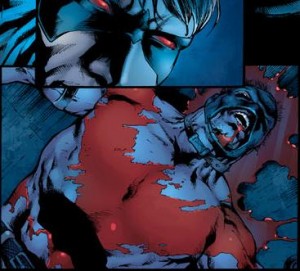
Most readers pick up a first volume of a character’s story in hopes of walking away with a fun story and a better understanding of who the character is. One of the most important parts of understand a character is knowing their origin. Here, Higgins handles the origin aspect of Dick Grayson and Nightwing quite well, taking it in a few different directions for readers new and old. Dick Grayson’s origin remains almost entirely unchanged, as he is still a circus orphan taken in by Bruce Wayne after a trapeze accident leaves both of his parents dead, much like Bruce’s. In this volume it is something that Higgins alludes to and even scripts into the story from time to time but it is never a full on flashback origin. Instead you’re given a piece of the puzzle ever so often so you get to feel out the origin instead of having an entire issue dump it on you. Even then, Higgins focuses more on telling new tales from Dick Grayson’s past instead of just telling the reader everything that happened to push him into being a superhero. If anything, Higgins highlights the monumental difference between Dick Grayson and Bruce Wayne, showing that, although both men grew up as orphans, Dick Grayson is fueled for vengeance or his parents’ deaths like Bruce Wayne is, instead choosing to save people because it feels like the inherently good thing to do. Higgins doesn’t really touch much on what drove Dick Grayson to transition from Robin into Nightwing in this issue but you feel like that is all besides the point here, as again Higgins feels far more interested in adding new wrinkles to the early life of Grayson at Haley’s circus.
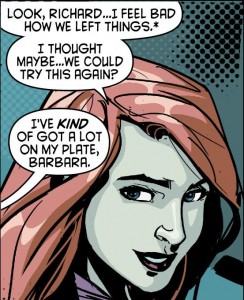
As much as I love talking about how great of a job Higgins does writing the character of Nightwing, his commitment to detail for the other characters in the volume suffers as a a result. The characterization of Nightwing is just so perfect than every other character in the volume seemingly pales in comparison. You see a few other Bat-family characters pop up in the story that help to counter balance out the weak supporting cast but it defeats the purpose when you know these characters are only making brief cameos. It feels like Higgins didn’t try to invest any time into the supporting cast of Haley’s Circus who are a rather central role to the overall story in this volume, giving us forgettable characters like Raya or even a weak antagonist like Saiko. After seeing how Higgins builds Nightwing’s character throughout the first volume you just have a hard time believing that someone like Saiko would give him a hard time especially when you take into account the fact that Grayson was skilled enough to take over the mantle of Batman for a year. If we’re being realistic here, anyone who is worthy enough to step up into the role of Batman would’ve figured out who Saiko was with relative ease and finished him off in less than an issue instead of dragging it out into a seven issue arc.
Even though the characters other than Dick Grayson leave plenty to be desired, the story for this comic is still fun and keeps you sticking around for the long run. Higgins gives Nightwing a “classic” comics feel, making it feel like a beautiful blend of silver age story telling with modern comics style. That’s not to say that this is a full on silver age adventure, as it is far from that, instead falling more into the realm of a modern comic. There’s plenty of widescreen action which only compliments the style of story Higgins sets out to tell, perfectly suiting a character like Nightwing. The comic’s story is fast paced and, as I’ve said plenty of times now, high-flying. Higgins highlights the characteristics of Grayson’s character in the way he drafts up the script, ensuring that artists highlight the fluidity of his movements and acrobatic nature. Ultimately, if you’re looking for a fun Nightwing story that doesn’t chew up a ton of reading time because of how quickly it moves along, then look no further because Kyle Higgins is definitely your guy.
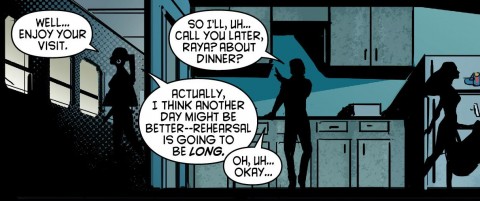
Collects: Nightwing #1-7.
Best Character: Dick Grayson.
Best Line Of Dialogue/Caption: “Even back when I was Robin, my mechanics were always great. I mean, I grew up an acrobat. But now? Now they’re flawless.” – Nightwing.
Best Scene/Moment: Nightwing shows off his acrobatic timing and skills. Issue 1 – Welcome to Gotham.
Best Issue: Issue 4 – South Beach Connection. This issue stands out amongst the rest because of the way it ties into the overall story arc but still sits on its own as a nice one-and-done story. Batgirl swings into town to get some help on a case from Dick and you know anytime you put these two characters together you’re in for a treat. The chemistry between the two members of the Bat-family is undeniable and shines through brilliant in an issue that you could consider a classic when looking at Higgins’ Nightwing run as a whole.
Why You Should Read It: You should read this volume to see what it looks like when a creator is a fan of the character before they get a chance to write the character in the first place. This reads as a love letter to all fans of Nightwing and is sure to be an exciting read for fans who have never really read anything about the character. It’s a perfect introduction to a character who, in some ways, is the polar opposite of Batman while still being very much like Batman. You should read this to see what Batman would be like with a fun personality (and there’s a whole Batman and Robin run with Dick Grayson as Batman that actually displays what I’m talking about here so check that one out too!).
C.O.W.L. Volume 1: Principles Of Power
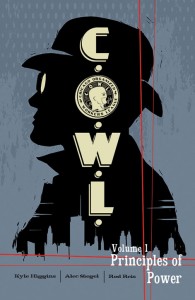 C.O.W.L. and Kyle Higgins have quite a tight history. It turns out that C.O.W.L. was initially a project Kyle Higgins was working on while going through school to become a director. “The League” was written and directed by Higgins as his college thesis film which opened the door for future work in the comic industry. Higgins circled back to The League and made it into the series C.O.W.L., a series about a labourized union of superheroes from the 1960’s, co-written by Alec Siegel and drawn by Rod Reis.
C.O.W.L. and Kyle Higgins have quite a tight history. It turns out that C.O.W.L. was initially a project Kyle Higgins was working on while going through school to become a director. “The League” was written and directed by Higgins as his college thesis film which opened the door for future work in the comic industry. Higgins circled back to The League and made it into the series C.O.W.L., a series about a labourized union of superheroes from the 1960’s, co-written by Alec Siegel and drawn by Rod Reis.
The Chicago Organized Workers League, or C.O.W.L. for short, is a gathering of unionized “superheroes” who protect the city of Chicago. But when all of the super villains located in Chicago are defeated, what’s left there for C.O.W.L. to truly do? C.O.W.L., under the guidance of Geoffrey Warner, one of Chicago’s first “superheroes”, begins a back and forth political struggle with the Mayor and the Chicago Police Department as they fight to claim stake over their dwindling relevance in a city where super powered villains don’t need to wear flashy costumes to commit their crimes.
If you were to compare C.O.W.L. to anything, I’d compare it to something like the television show “Mad Men” but with superheroes and some crime noir sprinkled in for good measure. I draw the comparison because both are set in the 1960’s and have a thick, precisely written narrative sown throughout. It’s the ability to draw these small comparisons that makes C.O.W.L. a little bit easier to explain as the series does have many complexities going for it but not in a mind bending, reality altering way. C.O.W.L. is written in a way that doesn’t hold your hand, you have to pay attention and pick up on the subtleties of the time period to truly comprehend what’s happening and why certain events unfold in the way they do. The best parts of C.O.W.L. is the mood and the attention to detail, which feeds into the subtleties that I mentioned in the previous paragraph. The world building done by Higgins and Siegel is second to none here as they establish a grimy Chicago during the ’60’s that plays by a different set of rules due to the inclusion of superheroes in society following the second World War.
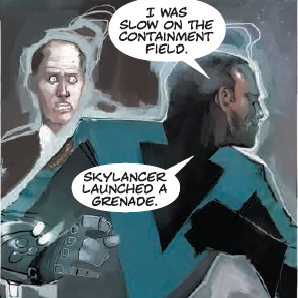
C.O.W.L. is a brilliant political AND crime noir story that’s set in a unique era of Chicago’s fictional history. The line between the political aspects and crime noir style is well established, with Kyle Higgins spending seemingly equal amounts of time playing with both sides. While the politics are slow moving at first, they ultimately payoff huge if you’re paying attention as there is never a wasted motion. All of the political intrigue of the story feeds into characters like Geoffrey Warner, the founder of C.O.W.L. and Reginald Davis, otherwise known as “Blaze”. The crime noir parts of the story take a direct look at the “front lines” of C.O.W.L., following characters like Radia, Arclight, and Eclipse, and how they cope with costumed crime as well as what comes after the complete elimination of said crime. There are still super powered villains around town but they choose to not wear costumes or announce their crimes as flamboyantly. In between all of this we get glimpses into how the politics of C.O.W.L. and the social norms of that time effect these front line characters.
Now I’ll break tradition hear and acknowledge that C.O.W.L. is actually a series I’m actively reading in the single issue format and I’d like to go to great lengths to stress that reading it in a collected format does the story plenty of favours. In a single issue format I found with the different time period and number of characters present it sometimes was hard to keep track of all the spinning plates. But now, this trade that has the first five issues of the series, makes the story just feel more cohesive and easier to understand. It’s not “dumbing it down”, it just doesn’t leave as much time in between reading issues which is always the benefit of reading in the trade format. It’s impossible to not burning through this collection in one sitting as each issue draws you in to keep reading because you just have to know what happens next.
The cast here is chalked full of great characters with plenty of moments to make them memorable. Each and every single primary character is given one moment or another that lets them shine, sometimes even using these big moments to feed into a large moment for another character. Nonetheless, everyone compliments each other here beautiful, in the way the co-exist or in the way they clash. With a character like Geoffrey Warner, one of the original superheroes for Chicago, The Grey Raven, you get that feeling that he’s a stuck up old man who won’t budge for anything or anyone. It’s either his way or the highway and it plays him off against seemingly every character other than Reginald Davis, who is only a few years younger than the well-aged Geoffrey. The two have been friends and partners for years and Reginald plays second fiddle to Geoffrey constantly as he starts to realize that the two are far from the equals that he thought they were. What makes Reginald such an interesting character is he is still what I’d consider close to a “front liner” for C.O.W.L., someone who still fights crime and works the streets but also deals with the political aspects like Warner does. The fact that he treads both sides of the line while being the only African American hero in the spotlight during this time period makes him a strong character that demands more of the spotlight down the line.
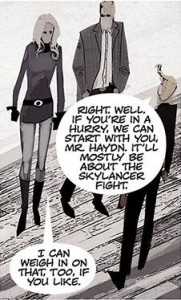
When you look at the entire cast you have to separate them into three distinct groups, the men of politics like Warner and Reginald, the men and women of the front line like Radia, Arclight and Eclipse, and then lastly the regulars like John Pierce and Grant Marlow who work with C.O.W.L. but have no powers. Watching how these three different subsets of characters interact is simply brilliant and is what makes this volume a fascinating read. The politically driven characters don’t care too much for the front liners because they lack respect. The front liners hate the men of politics because they aren’t down on the front lines with them, instead they call the shots and appear have it easy since they aren’t risking their lives. Lastly, the regular people resent both of the other groups of characters because of the jealousy they feel for a lack of having powers or the fact that the politically driven never tell the full story, telling half truths instead of full ones. We can go even further and tack on the powered up criminals who aren’t really super villains and how they work out of pocket for powerful men like Camden Stone and then you realize how much this story really has going on character wise. I could genuinely write three separate full articles just talking about the character and still feel like I’m only scratching the surface. The depth to the character pool here is astounding and something you should look forward to uncovering as C.O.W.L. continues on.
Now even though Kyle Higgins has only been working in the field of comics for a few years, I’m rather confident in saying that C.O.W.L. is the best work of his entire career and if this is what we have to look forward from him in the future, then Higgins will have a healthy career. The way he juggles the different social classes, the “rules” of the time period, the world building, and the plot and simply masterful. Coupled up on co-written duty with Alec Siegel, these two men are delivering one of the best superhero stories that not enough people are reading. It’s a series that shouldn’t be missed if you’re looking for an intelligent superhero story beyond your average good guy vs. bad guy because in C.O.W.L. just about everyone on any given day can be classified as “a bad guy”. You don’t need super powers to be a super villain.

Collects: C.O.W.L. #1-5.
Best Character: Radia.
Best Line Of Dialogue/Caption: “Truth is, if you’re great at something…eventually you’ll get promoted out of it. And then what are you?” – Geoffrey Warner.
Best Scene/Moment: A riot erupts – Issue 4: Unity.
Best Issue: Issue 3: Perception. Issue 3 gets the nod here because it perfectly captures the type of world that Kyle Higgins and Alec Siegel have set out to build. It plays around with ideas like Radia’s gender effecting her job, the political struggles of Geoffrey Warner, and what does one do when a super villain doesn’t wear a costume. The character work is incredible, the world building is enjoyable and the physical as well as verbal action is better than what you’ll find in most comics these days. Issue 3 defines C.O.W.L. as being not only exciting but intelligent as well.
Why You Should Read It: Higgins shows that capes and crime can be done beautifully in a different way. This is one of the most original superhero stories I’ve ever read and in a few years, I’d be surprised if people didn’t turn to use this as an example of crime and political fiction done to a high degree. The cast is incredibly diverse, the world is built beautifully and richly and the plot is always moving in interesting ways. Sometimes the plot is a chess match, other times it’s a full blown war. Either way, this is a must read for fans of crime superhero stories or people who want to read a damn good comic.

